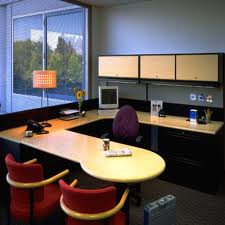Guidance, Training, and Innovation
The Work
Interior designers arrangement and organize the design and ornament of the inside of equally new and existing buildings. This can include personal houses and buildings such as offices, hotels, restaurants and shops.
Your work as an interior designer would normally engage:
• gathering with customers to argue their necessities and thoughts (the
' brief')
• increasing a design that suits the requirements of the customer, the
accessible resources and he sort of structure
• preparing original sketches for the authorization of the buyer
• advising on color schemes, fabrics, fittings and furniture
• working out expenses and preparing estimates
• growing initial sketches into complete drawings, typically on a computer
• Sourcing fittings, furniture, fabrics and wall and floor coverings.
You may also suggest people to bring out the work on site, and control their improvement.
Hours
You may require to work long, rough hours, which could include evenings and weekends.
You will generally be based in a studio, but will also spend a bunch of time visiting customers and sites.
As a temporary designer, you may work from home, share offices or rent a studio.
Income
• Junior designers can earn from around £15,000 to £20,000 a year.
• Experienced interior designers can earn up to, and over, £25,000.
• Senior designers can earn over £45,000.
• Freelance designers set their own hourly charge.
Entry Requirements
You will require a high level of design talent. In perform, this generally means implementation an art- or design-based BTEC HND or degree. A number of universities propose interior design courses – visit the British Interior Design Association (BIDA)
Further valuable subjects include fine art, 3-D design and architecture. Admission necessities for courses differ, so you should make sure with colleges and universities.
You will need a collection of examples of your design work to explain to potential employers and customers.
As a early point, you could build up practical skills by doing experience such as the subsequent:
• City & Guilds Level 1, 2 and 3 Award/Certificate/ Diploma in Creative
Techniques: Interiors units(7111, 7112 and 7113).
• BTEC National Certificate and Diploma courses in Art and Design
• ABC Diploma in Interior Design.
You can also pay attention short courses in a variety of aspects of interior design (such as upholstery and decorating techniques), at many colleges. The ABC Level 3 Award in CAD Skills for Interior Design is available at some colleges.
Struggle is tough, and the key to finding work is to acquire as much experience, and make as many links, as possible. Unpaid work experience will provide you the possibility to build up your portfolio, make links and amaze latent employers.
Yet, competition for work experience is also tough, so you will require to be resolute and practical. You can find out contact details for design companies and agencies from the members' lists of design organizations such as the Chartered culture of Designers, or from industry directories. See the BIDA website for details of specialist employment agencies.
Attending trade fairs and joining specialized organizations are also helpful way of making contacts and keeping up to date with industry developments.
Training and Development
Once you are working as an interior designer, you could build up your skills and development in your profession by implementation further education. You may be capable to attend related short courses at colleges or with private providers. You could also entire a postgraduate degree or diploma in an associated subject.
It will be helpful to link professional bodies such as the British Interior Design Association and the Chartered Society of Designers, as membership will give you access to recommendation, opportunities for ongoing professional development (CPD), and industry contacts.
Skills and Knowledge
• imagination• practical skills
• brilliant organizational skills
• assignment management skills
• sketch, computer-aided design (CAD) and model-making skills
• an understanding of building and security policy
• awareness of goods, properties of resources, and architectural history
• efficient communique skills, for working with suppliers, contractors and customers
• the ability to find practical solutions to problems
• the ability to work out expenditure and maintain within budgets
• business skills if self-employed.
Opportunities
You could be employed by trade outlets, interior design consultancies or architectural practices. Though, many interior designers are self-employed (either completely self-sufficient or under contract to a design agency).
You could use your experience in interior design to go into other associated work, such as theater set design, visual merchandising or exhibition design.
You may find the following links useful for job vacancies and general reading.
Nature of the Work
Interior designers draw upon lots of disciplines to improve the assignment, security, and aesthetics of interior spaces. Their key concerns are with how different colors, textures, furniture, lighting, and space work jointly to meet the needs of a building's occupants. Designers plan interior spaces of approximately all types of building, as well as offices, airport workstations, theaters, shopping centers, cafés, hotels, schools, hospitals, and confidential residence. Excellent plan can improve office efficiency, enhance deal, attract a more well off consumers, make available a more relaxing hospital stay, or raise a building's market cost.
Conventionally, the majority interior designers focused on decorating—choosing a style and color palette and then selecting appropriate furniture, floor and window coverings, artwork, and lighting. However, an increasing number of designers are becoming involved in architectural detailing, such as crown molding and built-in bookshelves, and in planning layouts of buildings undergoing renovation, including helping to determine the location of windows, stairways, escalators, and walkways.
Interior designers must be able to read blueprints, understand building and fire codes, and know how to make space accessible to people who are disabled. Designers frequently collaborate with architects, electricians, and building contractors to ensure that designs are safe and meet construction requirements.
Whatever space they are working on, almost all designers follow the same process. The first step, known as programming, is to determine the client's needs and wishes.
The designer usually meets face-to-face with the client to find out how the space will be used and to get an idea of the client's preferences and budget. For example, the designer might inquire about a family's cooking habits if the family is remodeling a kitchen or ask about a store or restaurant's target customer to pick an appropriate motif. The designer also will visit the space to take inventory of existing furniture and equipment and identify positive attributes of the space and potential problems.
After collecting this information, the designer formulates a design plan and estimates costs. Today, designs often are created with the use of computer-aided design (CAD) software, which provides more detail and easier corrections than sketches made by hand. Upon completing the design plan, the designer will present it to the client and make revisions based on the client's input.
When the design concept is finalized, the designer will begin specifying the materials, finishes, and furnishings required, such as furniture, lighting, flooring, wall covering, and artwork. Depending on the complexity of the project, the designer also might submit drawings for approval by a construction inspector to ensure that the design meets building codes. If a project requires structural work, the designer works with an architect or engineer for that part of the project. Most designs also require the hiring of contractors to do technical work, such as lighting, plumbing, and electrical wiring. Often designers choose contractors and write work contracts.
Finally, the designer develops a timeline for the project, coordinates contractor work schedules, and makes sure work is completed on time. The designer oversees the installation of the design rudiments, and after the project is complete, the designer, together with the customer, pay follow-up visits to the building site to make confident that the customer is satisfied. If the client is not happy, the designer makes improvement.
Designers who work for furniture or home and garden store up sell products in adding up to offering design services. In-store designers offer services, such as selecting a style and color format that fits the client's require or finding appropriate accessories and lighting, alike to those offered by other interior designers. Yet, in-store designers rarely visit clients' spaces and use only a particular store's products or list.
Interior designers sometimes manage helper who hold out their preparation and achieve administrative tasks, such as reviewing catalogues and ordering model. Designers who run their individual businesses also may dedicate significant time to developing new business get in touch with, examining equipment and space needs, and attending to business substance.
Although the majority interior designers do many type of projects, a few specialize in one area of interior design. Some specialize in the kind of building space—usually housing or commercial—while further specialize in a convinced design aspect or type of customer, such as healthcare facilities. The most ordinary specialties of this type are lighting, kitchen and bath, and closet designs. However, designers can specialize in almost any area of design, including auditory and noise abatement, protection, electronics and home theaters, home spas, and inside gardens.
Three part of design that are becoming gradually more popular are ergonomic design, elder design, and environmental—or green—design. Ergonomic design involves designing work spaces and furniture that highlight excellent posture and minimize strength damage on the body. Elder design involves arrangement interior space to support in the movement of people who are elderly and immobilize. Green design involves choose furniture and carpets that are free of chemicals and hypoallergenic and selecting manufacture materials that are energy-efficient or are prepared from renewable resources.
Work location
Working situation and places of employment differ. Interior designers employed by huge corporations or design firms normally work ordinary hours in well-lighted and relaxed settings. Designers in minor design confer with firms or those who freelance generally work on a contract, or job, basis. They frequently adjust their workday to suit their clients' schedules and deadlines, meeting with clients through evening or weekend hours when required. Consultants and self-employed designers be inclined to work longer hours and in smaller, more crowded atmosphere.
Interior designers can work under pressure to meet time limit, hang about on budget, and satisfy customers. Self-employed designers also are under stress to locate new customers to maintain a stable profits.
Designers could work in their personal offices or studios or in customers homes or offices. They also may move to other locations, such as showrooms, design centers, clients' exhibit spot, and built-up facilities. With the increased speed and complexity of computers and highly developed infrastructure system, designers may shape worldwide design teams, dish up a more geographically detached customers, research design another by using information on the Internet, and acquire supplies automatically.
















